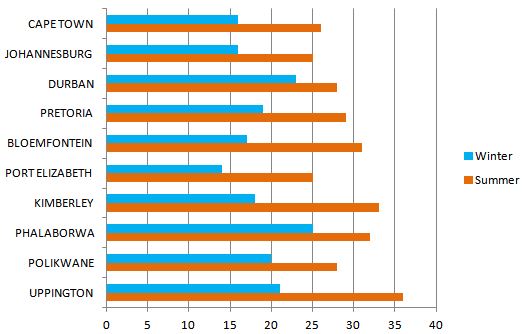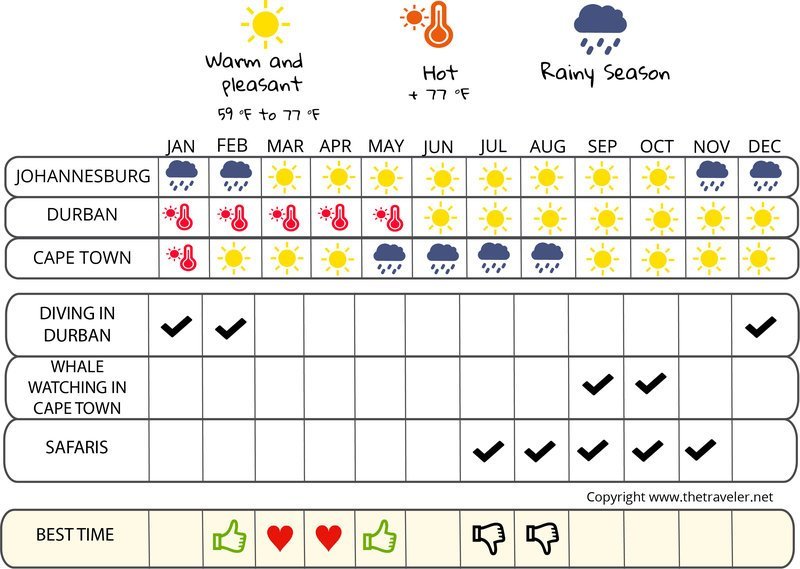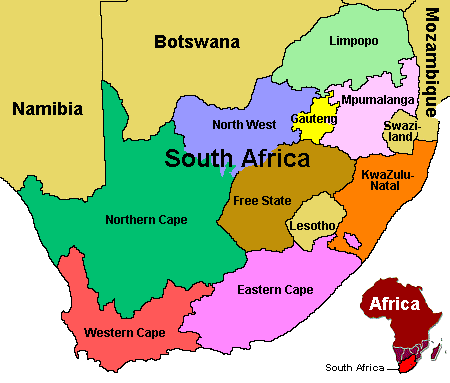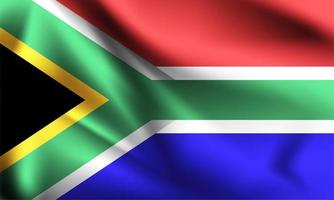South Africa, is the 25th-largest country in the world by land area, and with close to 58,8 million people, is the world’s 24th-most populous nation. It is the southernmost country on the mainland of the Old World or the Eastern Hemisphere. About 80 percent of South Africans are of Sub-Saharan African ancestry, divided among a variety of ethnic groups speaking different Bantu languages, nine of which have official status. The remaining population consists of Africa’s largest communities of European (white), Asian (Indian), and multiracial (coloured) ancestry.
South Africa is a multiethnic society encompassing a wide variety of cultures, languages, and religions. Its pluralistic makeup is reflected in the constitution’s recognition of 11 official languages, which is among the highest number of any country in the world. Two of these languages are of European origin: Afrikaans developed from Dutch and serves as the first language of most white and coloured South Africans; English reflects the legacy of British colonialism, and is commonly used in public and commercial life, though it is fourth-ranked as a spoken first language. The country is one of the few in Africa never to have had a coup d’état, and regular elections have been held for almost a century. However, the vast majority of black South Africans were not enfranchised until 1994. During the 20th century, the black majority sought to recover its rights from the dominant white minority, with this struggle playing a large role in the country’s recent history and politics. The National Party imposed apartheid in 1948, institutionalising previous racial segregation. After a long and sometimes violent struggle by the African National Congress and other anti-apartheid activists both inside and outside the country, discriminatory laws began to be repealed or abolished from 1990 onwards.
Since 1994, all ethnic and linguistic groups have held political representation in the country’s democracy, which comprises a parliamentary republic and nine provinces. South Africa is often referred to as the “Rainbow Nation” to describe the country’s multicultural diversity, especially in the wake of apartheid. The World Bank classifies South Africa as an upper-middle-income economy, and a newly industrialised country. Its economy is the second-largest in Africa, and the 34th-largest in the world. In terms of purchasing power parity, South Africa has the seventh-highest per capita income in Africa. However, poverty and inequality remain widespread, with about a quarter of the population unemployed and living on less than US$1.25 a day. Nevertheless, South Africa has been identified as a middle power in international affairs, and maintains significant regional influence.
Population: 54.96 million (2015)
Languages
South Africa has eleven official languages: Afrikaans, English, Ndebele, Northern Sotho, Sotho, Swazi, Tswana, Tsonga, Venda, Xhosa, and Zulu. In this regard it is third only to Bolivia and India in number. While all the languages are formally equal, some languages are spoken more than others. According to the 2011 census, the three most spoken first languages are Zulu (22.7%), Xhosa (16.0%), and Afrikaans (13.5%). Despite the fact that English is recognised as the language of commerce and science, it ranked fourth, and was listed as the first language of only 9.6% of South Africans in 2011 but remains the de facto lingua franca of the nation.
The country also recognises several unofficial languages, including Fanagalo, Khoe, Lobedu, Nama, Northern Ndebele, Phuthi, and South African Sign Language. These unofficial languages may be used in certain official uses in limited areas where it has been determined that these languages are prevalent.
Many of the unofficial languages of the San and Khoikhoi people contain regional dialects stretching northwards into Namibia and Botswana, and elsewhere. These people, who are a physically distinct population from other Africans, have their own cultural identity based on their hunter-gatherer societies. They have been marginalised to a great extent, and the remainder of their languages are in danger of becoming extinct.
Many white South Africans also speak European languages, including Portuguese (also spoken by black Angolans and Mozambicans), German, and Greek, while some Asians in South Africa speak Asian languages, such as Gujarati, Hindi, Tamil, Telugu, and Urdu. French is spoken in South Africa by migrants from Francophone Africa.
Geography
South Africa is located at the southernmost region of Africa, with a long coastline that stretches more than 2,500 km (1,553 mi) and along two oceans (the South Atlantic and the Indian). At 1,219,912 km2 (471,011 sq mi), South Africa is the 25th-largest country in the world and is comparable in size to Colombia. Mafadi in the Drakensberg at 3,450 m (11,320 ft) is the highest peak in South Africa. Excluding the Prince Edward Islands, the country lies between latitudes 22° and 35°S, and longitudes 16° and 33°E.
The land
Stretching latitudinally from 22°S to 35°S and longitudinally from 17°E to 33°E, South Africa’s surface area covers 1 219 602 km2.
According to Census 2011, the shift of the national boundary over the Indian Ocean in the north-east corner of KwaZulu-Natal to cater for the Isimangaliso Wetland Park led to the increase in South Africa’s land area.
Physical features range from bushveld, grasslands, forests, deserts and majestic mountain peaks, to wide unspoilt beaches and coastal wetlands. The country shares common boundaries with Namibia, Botswana, Zimbabwe, Mozambique and Swaziland, while the Mountain Kingdom of Lesotho is landlocked by South African territory in the south-east.
The 3 000-km coastline is an even, closed one with few bays or indentations naturally suitable for harbours and stretches from the Mozambican border in the east to the Namibian border in the west. The Atlantic and Indian oceans meet at Cape Point in the continent’s south-western corner.
The Prince Edward and Marion islands, annexed by South Africa in 1947, lie some 1 920 km south-east of Cape Town.
The oceans and coastline
The warm Mozambique-Agulhas Current skirts the east and south coasts as far as Cape Agulhas, while the cold Benguela Current flows northwards along the west coast as far as southern Angola. The contrast in temperature between these two currents partly accounts for significant differences in climate and vegetation, as well as differences in marine life.
Owing to the cold waters of the west coast being much richer in oxygen, nitrates, phosphates and plankton than those of the east coast, the South African fishing industry is centred on the west coast.
Saldanha Bay on the west coast is the only ideal natural harbour.
Rivers and lakes
None of the country’s rivers are commercially navigable and most river mouths are unsuitable as harbours because large sandbanks block entry for most of the year.
South Africa has no significant natural lakes, but several artificial lakes are used mostly for crop irrigation.
The Orange River is South Africa’s largest river. Rising in the Drakensberg Mountains, it traverses through the Lesotho Highlands and joins the Caledon River between the Eastern Cape and the Free State. Before it empties into the Atlantic Ocean, it forms the border with Namibia.
Other major rivers include the Vaal, Breede, Komati, Lepelle (previously Olifants), Tugela, Umzimvubu, Limpopo and Molopo rivers.
Relief features
South Africa’s surface area falls into two major physiographic categories: the interior plateau, and the land between the plateau and the coast.
Forming the boundary between these two areas is the Great Escarpment, the most prominent and continuous relief feature of the country. Its height above sea level varies from about 1 500 m in the dolerite-capped Roggeveld scarp in the south-west, to a height of 3 482 m in the KwaZulu-Natal Drakensberg.
Inland from the escarpment lies the interior plateau, which is the southern continuation of the great African plateau stretching north to the Sahara Desert. The plateau is characterised by wide plains with an average height of 1 200 m above sea level. The dissected Lesotho plateau, which is more than 3 000 m above sea level, is the most prominent. In general, the escarpment forms the highest parts of the plateau.
Between the Great Escarpment and the coast lies an area which varies in width from 80 km to 240 km in the east and south, and a mere 60 km to 80 km in the west. At least three major subdivisions are recognised: the eastern plateau slopes, the Cape folded belt and adjacent regions and the western plateau slopes.
Climate
South Africa has a generally temperate climate, due in part to being surrounded by the Atlantic and Indian Oceans on three sides, by its location in the climatically milder Southern Hemisphere and due to the average elevation rising steadily towards the north (towards the equator) and further inland. Due to this varied topography and oceanic influence, a great variety of climatic zones exist. The climatic zones range from the extreme desert of the southern Namib in the farthest northwest to the lush subtropical climate in the east along the Mozambique border and the Indian Ocean. Winters in South Africa occur between June and August.

The extreme southwest has a climate remarkably similar to that of the Mediterranean with wet winters and hot, dry summers, hosting the famous fynbos biome of shrubland and thicket. This area also produces much of the wine in South Africa. This region is also particularly known for its wind, which blows intermittently almost all year. The severity of this wind made passing around the Cape of Good Hope particularly treacherous for sailors, causing many shipwrecks. Further east on the south coast, rainfall is distributed more evenly throughout the year, producing a green landscape. This area is popularly known as the Garden Route.
The Free State is particularly flat because it lies centrally on the high plateau. North of the Vaal River, the Highveld becomes better watered and does not experience subtropical extremes of heat. Johannesburg, in the centre of the Highveld, is at 1,740 m (5,709 ft) and receives an annual rainfall of 760 mm (29.9 in). Winters in this region are cold, although snow is rare.
The high Drakensberg mountains, which form the south-eastern escarpment of the Highveld, offer limited skiing opportunities in winter. The coldest place on mainland South Africa is Sutherland in the western Roggeveld Mountains, where midwinter temperatures can reach as low as −15 °C (5 °F). The Prince Edward Islands have colder average annual temperatures, but Sutherland has colder extremes. The deep interior of mainland South Africa has the hottest temperatures: a temperature of 51.7 °C (125.06 °F) was recorded in 1948 in the Northern Cape Kalahari near Upington,[80] but this temperature is unofficial and was not recorded with standard equipment, the official highest temperature is 48.8 °C (119.84 °F) at Vioolsdrif in January 1993.

Economy
South Africa has a mixed economy, the second largest in Africa after Nigeria. It also has a relatively high GDP per capita compared to other countries in Sub-Saharan Africa ($11,750 at PPP as of 2012). Despite this, South Africa is still burdened by a relatively high rate of poverty and unemployment, and is also ranked in the top 10 countries in the world for income inequality, measured by the Gini coefficient.
Unlike most of the world’s poor countries, South Africa does not have a thriving informal economy. Only 15% of South African jobs are in the informal sector, compared with around half in Brazil and India and nearly three-quarters in Indonesia. The OECD attributes this difference to South Africa’s widespread welfare system. World Bank research shows that South Africa has one of the widest gaps between per capita GNP versus its Human Development Index ranking, with only Botswana showing a larger gap.
After 1994 government policy brought down inflation, stabilised public finances, and some foreign capital was attracted, however growth was still subpar. From 2004 onward economic growth picked up significantly; both employment and capital formation increased. During the presidency of Jacob Zuma, the government has begun to increase the role of state-owned enterprises. Some of the biggest state-owned companies are Eskom, the electric power monopoly, South African Airways (SAA), and Transnet, the railroad and ports monopoly. Some of these state-owned companies have not been profitable, such as SAA, which has required bailouts totaling 30 billion rand ($2.3 billion) over 20 years.
South Africa is a popular tourist destination, and a substantial amount of revenue comes from tourism. Illegal immigrants are involved in informal trading. Many immigrants to South Africa continue to live in poor conditions, and the immigration policy has become increasingly restrictive since 1994.
Principal international trading partners of South Africa—besides other African countries—include Germany, the United States, China, Japan, the United Kingdom and Spain.
The South African agricultural industry contributes around 10% of formal employment, relatively low compared to other parts of Africa, as well as providing work for casual labourers and contributing around 2.6% of GDP for the nation. Due to the aridity of the land, only 13.5% can be used for crop production, and only 3% is considered high potential land.
In August 2013, South Africa was ranked as the top African Country of the Future by FDi magazine based on the country’s economic potential, labour environment, cost-effectiveness, infrastructure, business friendliness, and Foreign direct investment Strategy.
The FSI ranks South Africa as the 36th safest tax haven in the world, ahead of the Philippines but behind the Bahamas.
Religion
According to the 2001 census, Christians accounted for 79.8% of the population, with a majority of them being members of various Protestant denominations (broadly defined to include syncretic African initiated churches) and a minority of Roman Catholics and other Christians. Christian category includes Zion Christian (11.1%), Pentecostal (Charismatic) (8.2%), Roman Catholic (7.1%), Methodist (6.8%), Dutch Reformed (Nederduits Gereformeerde Kerk; 6.7%), Anglican (3.8%). Members of remaining Christian churches accounted for another 36% of the population. Muslims accounted for 1.5% of the population, Hindus 1.2%, traditional African religion 0.3% and Judaism 0.2%. 15.1% had no religious affiliation, 0.6% were other and 1.4% were unspecified.
African initiated churches formed the largest of the Christian groups. It was believed that many of the persons who claimed no affiliation with any organised religion adhered to traditional African religion. There are an estimated 200,000 indigenous traditional healers in South Africa, and up to 60% of South Africans consult these healers, generally called sangomas or inyangas. These healers use a combination of ancestral spiritual beliefs and a belief in the spiritual and medicinal properties of local fauna and flora, commonly known as muti, to facilitate healing in clients. Many peoples have syncretic religious practices combining Christian and indigenous influences.
South African Muslims comprise mainly those who are described as Coloureds and those who are described as Indians. They have been joined by black or white South African converts as well as others from other parts of Africa.cSouth African Muslims claim that their faith is the fastest-growing religion of conversion in the country, with the number of black Muslims growing sixfold, from 12,000 in 1991 to 74,700 in 2004.
South Africa is also home to a substantial Jewish population, descended from European Jews who arrived as a minority among other European settlers. This population peaked in the 1970s at 120,000, though only around 67,000 remain today, the rest having emigrated. Even so, these numbers make the Jewish community in South Africa the twelfth largest in the world.
Ethnic Indian Hindus form another significant portion of the population.
Culture
The South African black majority still has a substantial number of rural inhabitants who lead largely impoverished lives. It is among these people that cultural traditions survive most strongly; as blacks have become increasingly urbanised and Westernised, aspects of traditional culture have declined. Members of the middle class, who are predominantly white but whose ranks include growing numbers of black, coloured and Indian people, have lifestyles similar in many respects to that of people found in Western Europe, North America and Australasia.
The South African Scout Association was one of the first youth organisations to open its doors to youth and adults of all races in South Africa. This happened on 2 July 1977 at a conference known as Quo Vadis.
Sports
South Africa’s most popular sports are soccer, rugby and cricket. Other sports with significant support are swimming, athletics, golf, boxing, tennis, ringball, and netball. Although soccer commands the greatest following among the youth, other sports like basketball, surfing and skateboarding are increasingly popular.
Soccer players who have played for major foreign clubs include Steven Pienaar, Lucas Radebe and Philemon Masinga, Benni McCarthy, Aaron Mokoena, and Delron Buckley. South Africa hosted the 2010 FIFA World Cup, and FIFA president Sepp Blatter awarded South Africa a grade 9 out of 10 for successfully hosting the event.
Famous boxing personalities include Baby Jake Jacob Matlala, Vuyani Bungu, Welcome Ncita, Dingaan Thobela, Gerrie Coetzee and Brian Mitchell. Durban Surfer Jordy Smith won the 2010 Billabong J-Bay competition making him the no 1 ranked surfer in the world. South Africa produced Formula One motor racing’s 1979 world champion Jody Scheckter. Famous current cricket players include AB de Villiers, Hashim Amla, Dale Steyn, Vernon Philander, Faf du Plessis etc. Most of them also participate in the Indian Premier League.
South Africa has also produced numerous world class rugby players, including Francois Pienaar, Joost van der Westhuizen, Danie Craven, Frik du Preez, Naas Botha and Bryan Habana. South Africa hosted and won the 1995 Rugby World Cup and won the 2007 Rugby World Cup in France. It followed the 1995 Rugby World Cup by hosting the 1996 African Cup of Nations, with the national team going on to win the tournament. It also hosted the 2003 Cricket World Cup, the 2007 World Twenty20 Championship. South Africa has also won the inaugural edition of the 1998 ICC KnockOut Trophy by defeating West Indies in the final.South Africa team also went onto win the inaugural edition of the Blind Cricket World Cup in 1998.
In 2004, the swimming team of Roland Schoeman, Lyndon Ferns, Darian Townsend and Ryk Neethling won the gold medal at the Olympic Games in Athens, simultaneously breaking the world record in the 4×100 freestyle relay. Penny Heyns won Olympic Gold in the 1996 Atlanta Olympic Games. In 2012 Oscar Pistorius became the first double amputee sprinter to compete at the Olympic Games in London. In golf, Gary Player is generally regarded as one of the greatest golfers of all time, having won the Career Grand Slam, one of five golfers to have done so. Other South African golfers to have won major tournaments include Bobby Locke, Ernie Els, Retief Goosen, Tim Clark, Trevor Immelman, Louis Oosthuizen and Charl Schwartzel.
Cuisine
South African culture is diverse; foods from many cultures are enjoyed by all and especially marketed to tourists who wish to sample the large variety of South African cuisine. In addition to food, music and dance feature prominently.
South African cuisine is heavily meat-based and has spawned the distinctively South African social gathering known as a braai, or barbecue. South Africa has also developed into a major wine producer, with some of the best vineyards lying in valleys around Stellenbosch, Franschhoek, Paarl and Barrydale.
Health
According to the South African Institute of Race Relations, the life expectancy in 2009 was 71 years for a white South African and 48 years for a black South African. The healthcare spending in the country is about 9% of GDP.
Only 16% of the population is covered by medical schemes. About 20% use private healthcare. The rest pay “out of pocket” or through hospital cash plans. The three dominant hospital groups, Mediclinic, Life Healthcare and Netcare, together control 75% of the market.[198] About 84% of the population depend on the public healthcare system,[which is beset with chronic human resource shortages and limited resources.
South Africa is home to the third largest hospital in the world, the Chris Hani Baragwanath Hospital.
HIV/AIDS
According to the 2015 UNAIDS Report, South Africa has an estimated 7 million people living with HIV – more than any other country in the world. A 2008 study revealed that HIV/AIDS infection in South Africa is distinctly divided along racial lines: 13.6% of blacks are HIV-positive, whereas only 0.3% of whites have the disease. Most deaths are experienced by economically active individuals, resulting in many AIDS orphans who in many cases depend on the state for care and financial support. It is estimated that there are 1,200,000 orphans in South Africa.
The link between HIV, a virus spread primarily by sexual contact, and AIDS was long denied by prior president Thabo Mbeki and then health minister Manto Tshabalala-Msimang, who insisted that the many deaths in the country are due to malnutrition, and hence poverty, and not HIV. In 2007, in response to international pressure, the government made efforts to fight AIDS. After the 2009 General Elections, President Jacob Zuma appointed Dr Aaron Motsoaledi as the new minister and committed his government to increasing funding for and widening the scope of AIDS treatment.














